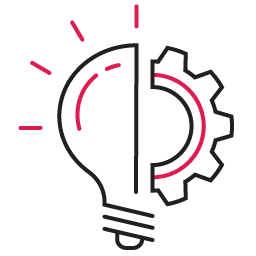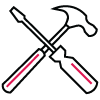Business Transformation – Tools are a Vital Component
Organizations have been pushing transformation toward better working methods for decades in the manufacturing and software industries, and now integrating software and hardware together. These transformations come in many forms: Six Sigma/Lean, Agile/Business Agility, Project to Product, Digital Transformation, and more. I have spent much of my career successfully supporting organizations through this change—defining new ways of working, supporting new methods of communication and collaboration.
There was a point in my career when I did not understand the value of leveraging flow-based workflow management tools. Luckily for me, I learned. There are still many business professionals out there in the same situation I was in. In this quick read, I hope to help you understand why tooling can be a force multiplier in your transformation and what you’ll need to consider when adopting these tools.
What’s changed with change?
Over the past years, a couple of things have changed in how we look at these transformations.
- Change makes workers tired; we need new behavior drivers to motivate the organization.
- Leaders are sick of single solution frameworks and mindsets; they want change focused on outcomes.
The business world has accepted that constant change is the new norm to stay ahead in the competitive market. If change is going to be a competitive advantage, we need to be mindful of what we change and why. We need to focus and validate our changes based upon outcomes.
Where I went wrong, and what I learned:

Today, implementing workflow management tooling as a part of your transformation is essential for success. Let’s dive into what this means and what you should consider when implementing a tooling strategy.
Define the approach and validate the outcomes
As a leader in organizational change, I often get calls that start with questions like:
-
- Can you make us a product-led organization?
- Can you help us adopt SAFe or Scrum at Scale in our organization?
- Can you support us with the use of OKRs? (Objectives and Key Results)
My answer is yes, but then I ask them, “Tell me more about why you want to do this? Tell me about the pains you are facing and the outcomes you are hoping to achieve by doing this?” You may be surprised to learn that many organizations either do not know the answer to these questions or cannot find the answer, so they want to start over completely.
Rather than throwing everything away and starting from scratch, it’s vital to focus on understanding the current gaps and pain points and study their root cause. The organization is still in business in an incredibly competitive market. They do not know all the answers because they do not have the data to help them.
Five steps to prepare for the framework conversation
So, before they jump into a framework, they need to step back to prepare themselves for what is ahead of them. There are at least five steps necessary before we have a conversation around frameworks:
- Creating a high-level process and data value stream to understand how things flow through the organization
- Educating the organization’s executives and leaders on the “art of the possible” with new ways of working
- Establishing expected outcomes and key results for the organization
- Setting the path by creating a roadmap on how to achieve those key results, rather than complying with a framework
- Setting a cadence to measure the key results so we can build in continuous improvement
The most important thing is recognizing they don’t necessarily understand the end state or how they expect the organization to function to establish the results they hope to achieve and enable change to reach those results. The organization just needs to understand the landscape so that they are enabled to leverage the tooling to change.
How to choose the optimal tooling setup

Begin with the end in mind
Start by understanding the dashboards and reporting you want to see to validate the results the organization wants to achieve. This will enable you to choose a minimally viable tooling solution that gets the job done because it focuses only on what the organization needs rather than collecting excess data that is never used.
Create a single source of truth
Establish systems that will serve as a single source of truth. There will be multiple tools and data being exchanged across the systems. Ensure the source of truth can only be modified by trained and accountable users. This maintains simplicity and accuracy and avoids the possibility of people massaging the data to tell a different story.
Link multiple tools to support various needs
One tool will not solve your problems. It is important to leverage the right tools for the right outputs and use cases. Do not assume that one solution can support OKRs, create and manage a product roadmap, manage user stories, and support your help desk. Different users will want various tools with unique features to do their work successfully and arrive at the insights you’re looking for. Pushing them to a single tool will necessitate multiple sources of truth. The important thing to remember is how to bring them together to tell the right story.
Establish an enterprise architecture to control how tools will exchange data. Leveraging cloud-based tools and tool integration solutions will be an essential part of your enterprise solution.
Use the tools to collaborate and communicate
Lastly, do not forget about communication and collaboration. The tooling is not just about work management. Users will need to integrate collaboration features to support them, especially as we work more in a remote and hybrid mode.



